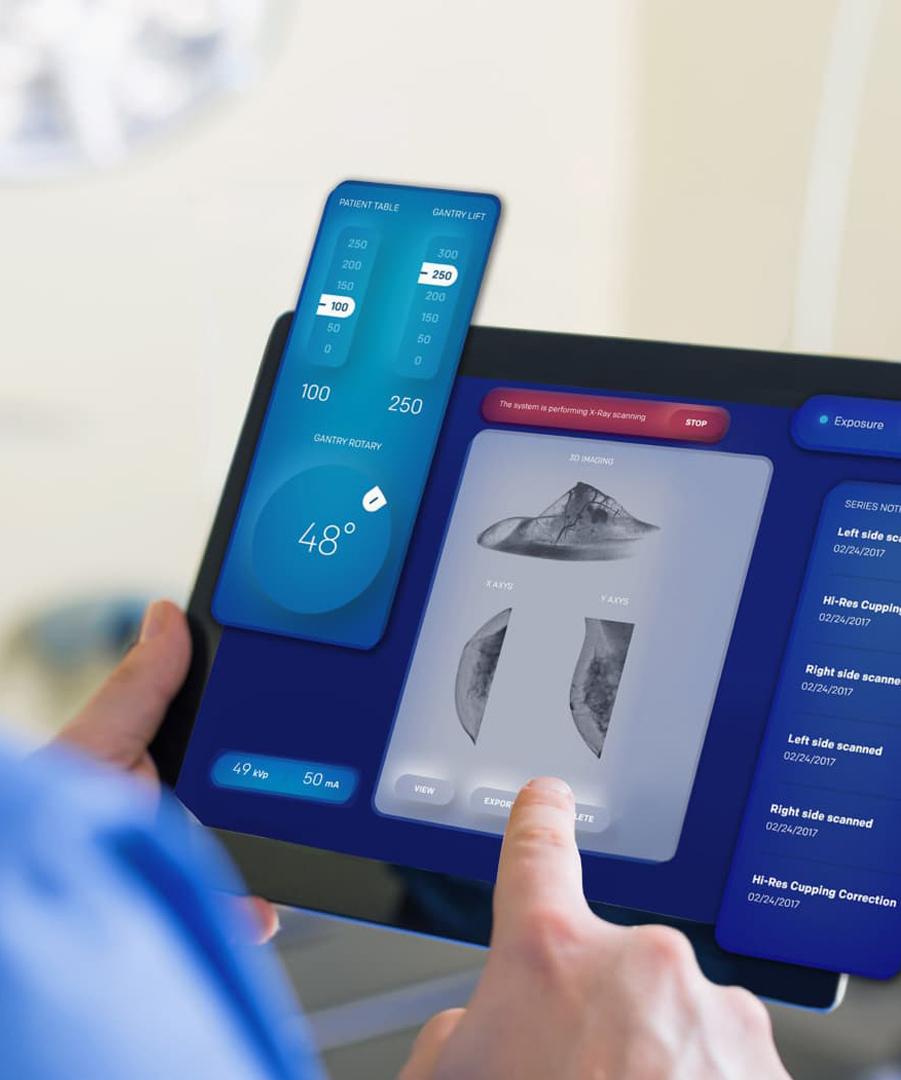


In the urban firefighting equipment system, tower fire trucks with their unique high-altitude operation capabilities have become core assets in combating high-rise building fires. These specialized fire vehicles utilize hydraulic or mechanical transmission systems to elevate firefighting platforms dozens of meters high, achieving three-dimensional fire suppression effects unattainable by conventional equipment. With accelerating urbanization and exponential growth in high-rise buildings, the strategic value of aerial fire trucks has become increasingly prominent.
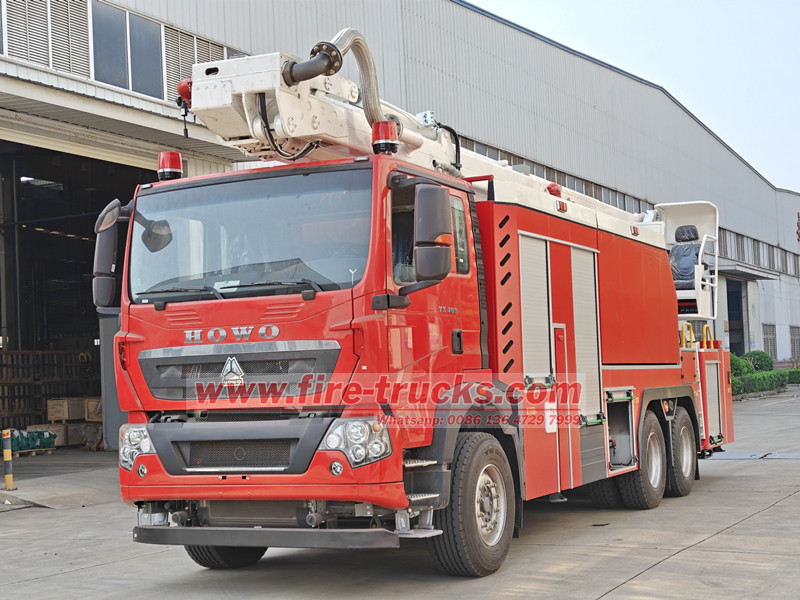
As a professional manufacturer in firefighting equipment, POWERSTAR leverages its strong R&D capabilities and extensive modification experience to customize high-performance aerial fire trucks based on various chassis platforms, including ISUZU tower fire truck, HOWO aerial fire truck, Shacman water tower fire truck, and FAW tower fire engine series. Below, we take the HOWO water foam tower fire truck as an example to provide a detailed analysis of the technical features and performance advantages of this specialized firefighting vehicle.
1. Main Vehicle Characteristics
1) Equipped with aerial firefighting capabilities, featuring smooth and rapid outrigger and boom movements for faster deployment.
2) The HOWO aerial tower fire truck boasts advanced design technology, reliable quality, and leading domestic performance parameters.
3) Incorporates imported American electro-hydraulic proportional control technology with hydraulic transmission for stable and user-friendly operation.
4) Adopts a three-section telescopic boom and single-section articulated arm structure. The telescopic boom can elevate within an 80° range, while the articulated arm achieves 180° movement. The boom features a polygonal box-section design constructed from high-strength steel.
5) Boom rotation with buffering function:
The rotation mechanism employs planetary gear reducers and normally closed brakes, driven by fixed-displacement motors through single-row ball slewing bearings. The hydraulic system includes cushioning valves to ensure smooth start-stop performance and excellent micro-motion control.
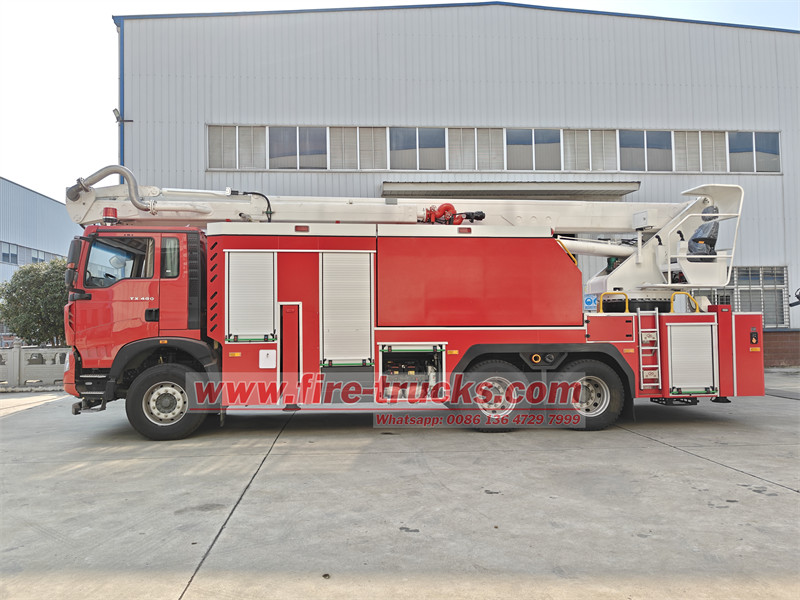
2. Key Component Features
1) Telescopic Boom and Mechanism
The main boom features a polygonal box-section synchronous telescopic design made from high-strength steel plates with a hexagonal cross-section. Nylon sliding blocks reduce friction resistance, ensuring smooth extension/retraction. The dual-action cylinder mechanism eliminates shaking during movement for enhanced stability.
2) Articulated Arm
With quadrilateral cross-section, the articulated arm achieves 180° folding through dual-action cylinders and a four-link mechanism. The arm tip is equipped with an electric remote-controlled monitor, anemometer, and lighting system.
3) Turntable Structure
The turntable connects the boom to the subframe, housing the rotation mechanism. The luffing cylinders are mounted inside vertical plates, with an operation console on the left side for boom and monitor control. A slewing bearing connects to the subframe, while the rotation system—comprising hydraulic motors and planetary gear reducers—enables 360° continuous rotation through hydraulic pump-driven high-pressure oil flow.
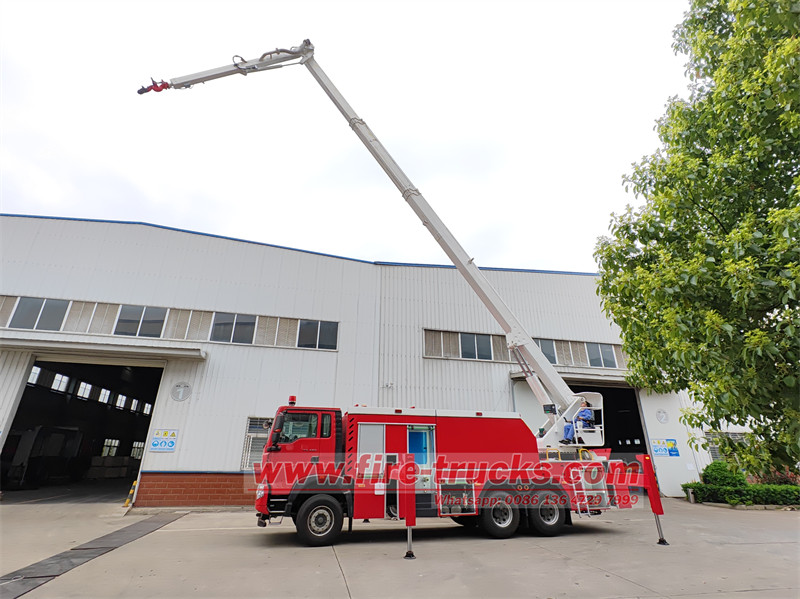
4) Center Rotary Joint
This component links upper/lower vehicle hydraulic, electrical, and water circuits, preventing damage during rotation.
5) Electric Remote-Controlled Monitor
Supplied by Akron (Model 3482) with Amiron 5177 nozzle, featuring automatic flow adjustment (30-80L/s), rated pressure 1.0MPa, range >70m, 355° horizontal rotation, -45° to 120° elevation, 100m wireless remote control, and monitoring display.
6) Fire Pump System
Imported American PSP1600 pump delivers 6000L/min flowrate with >7m suction lift and <60s priming time, equipped with advanced computerized automatic pressure stabilization.
Auto-foam proportioning system: 1%-10% mixing ratio.
7) Water Delivery System
Aluminum telescopic piping routes water/foam through the center rotary joint to the upper vehicle. The articulated arm's remote monitor offers straight/spray patterns for water/foam discharge, with high-capacity ground-level inlets for high-rise firefighting demands.
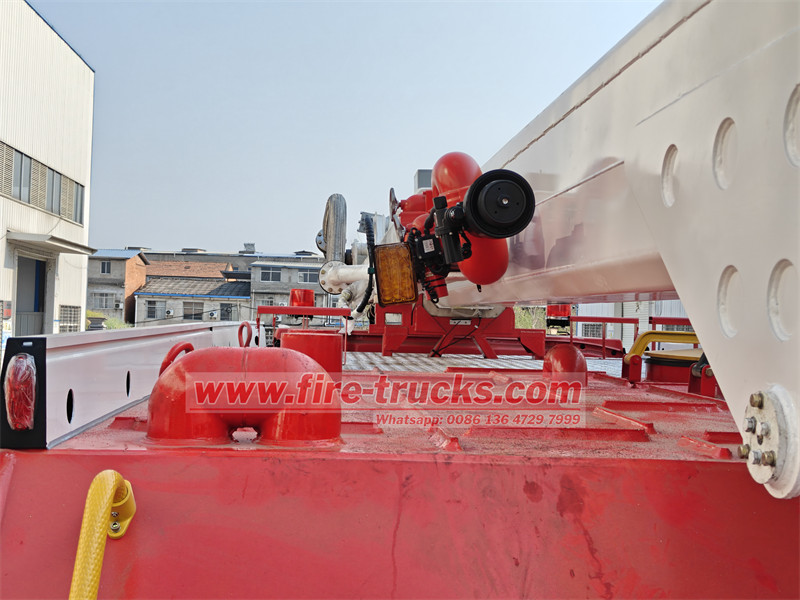
8) Liquid Tanks
a. Capacity: 7000L water/2000L foam (customizable)
b. Elastic-mounted to subframe
c. PP material construction ensures corrosion resistance and leak-proof performance
d. Internal baffles, maintenance manholes, and anti-slip top surface
e. Features include:
• Two 460mm manholes with quick-lock mechanisms
• Automatic 2-bar pressure relief
• Color-coded lids (green=water, yellow=foam)
• Water tank: DN80 overflow pipe with vented cap, level indicators
• Foam tank: DN80 overflow, level indicator
• Four DN80 fill inlets (converging to DN100) with ball valves
• Two drain ports with ball valves
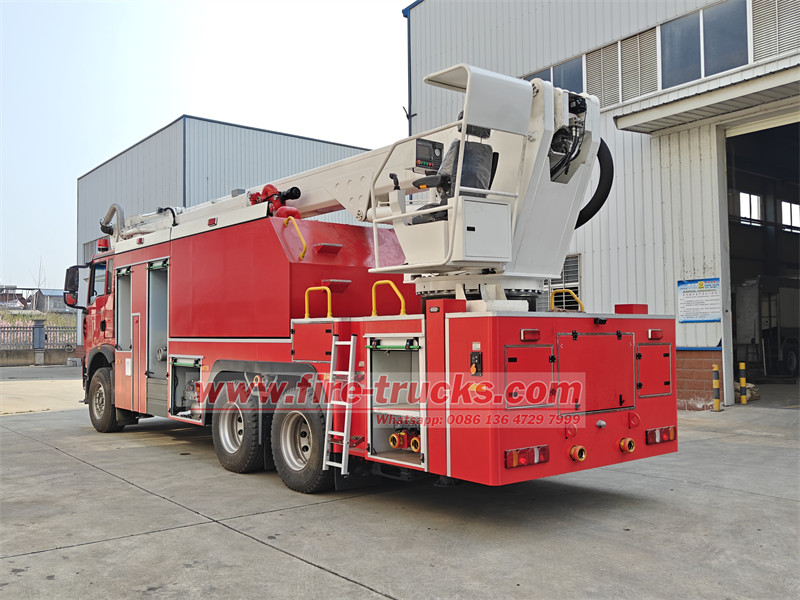
3. Safety Systems
As critical equipment for aerial rescue and firefighting, HOWO tower firefighting trucks incorporate comprehensive safety features per Chinese standards and operational experience:
1) Dual electrical/hydraulic controls maintain boom operation during electrical failures
2) Interlock between upper/lower vehicles
3) Platform overload alarm
4) Anti-collision protection
5) Emergency stowage function
6) Backup power for boom retraction during main power loss
7) Boom limit deceleration
8) Platform centering and anti-impact devices
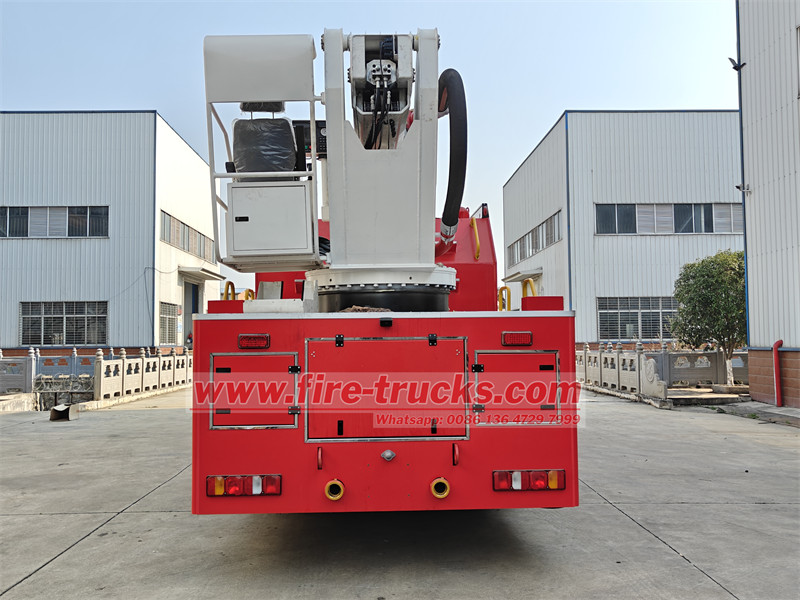
As an essential component of modern urban firefighting systems, the HOWO aerial tower fire truck delivers reliable high-altitude firefighting capabilities through its superior operational performance, system stability, and comprehensive safety protections. For detailed technical specifications or customization options, please contact our team.
You may be interested in the following information